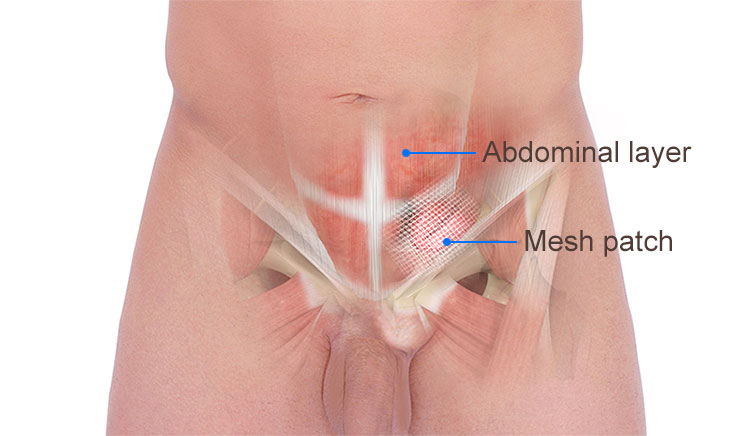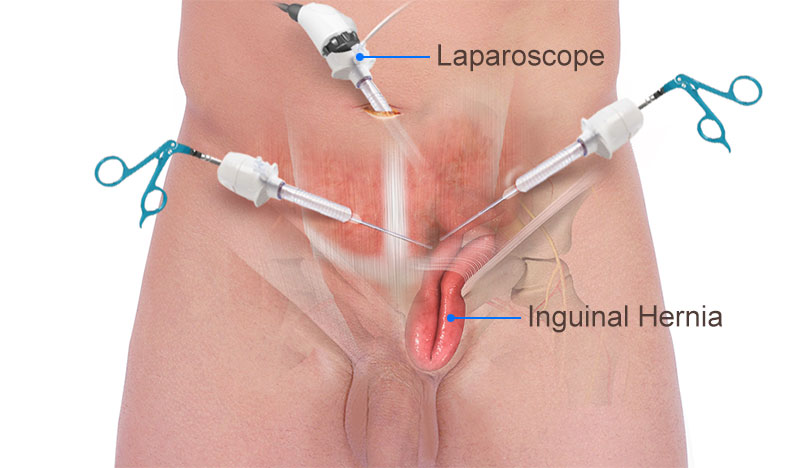
Small inguinal hernias that do not cause any symptoms are usually not treated; your doctor may follow a wait-and-watch approach. Surgery is recommended for inguinal hernias that show symptoms, are enlarged and entrapped. Inguinal hernias in children are generally operated on as they have a high risk of becoming strangulated. Treatment can be through either open hernia repair or laparoscopic surgery.
Open hernia repair: This procedure is also called herniorrhaphy. You may be given either general anaesthesia or local anaesthesia in your spine or abdomen. Your surgeon will make an incision in the groin and push back the bulged intestine into your abdomen. The muscles of the abdominal wall will be stitched. A hernioplasty may be performed, where a synthetic mesh or screen is stitched to support the weakened part of the abdominal wall.

Laparoscopy: This procedure is performed under general anaesthesia. Your surgeon will make several small incisions on your abdomen, through which a laparoscope and other special instruments will be inserted. The video camera attached to the laparoscope will send magnified images to a monitor, which will guide the surgeon during surgery. Your surgeon will push the bulge into your abdomen and either stitch the abdominal wall (herniorrhaphy)or use mesh to support the weakened wall(hernioplasty).

Laparoscopy is advised for patients with a recurring hernia who have had a prior traditional hernia repair. People with bilateral inguinal hernias (hernia on both sides of the pelvis) are also advised to undergo laparoscopic repair. However, the minimally invasive procedure is not preferred for patients with very large hernias or who have had a prior pelvic surgery.